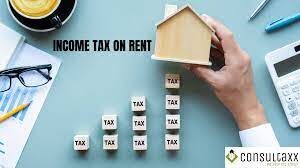Investing in property has always been considered a safe option for regular income through renting. However, there are some tax implications on rental income. According to tax experts, the rental income for an individual landlord is taxed as per his/her applicable tax slab rates under the head income from house property. In this article, we explain how income from rent is taxed and how it is calculated.
“The tax on rental income is computed by applying the marginal slab rate applicable to the taxpayer on the Net Annual value of the property,” says Dr Suresh Surana, Founder of RSM India.
According to Dr Surana, a taxpayer may claim up to two houses as self-occupied properties (SOP) in a case where the annual value would be considered as NIL and accordingly, no tax would be payable on the said property.
Any property, other than two SOPs, would be deemed to be let out where the tax would be payable treating the reasonable expected rent as Gross Annual value.
Standard deduction
An individual landlord is allowed to take a standard deduction of 30% on net asset value (gross rent received ‘less’ property taxes or municipal taxes paid by him) to arrive at net income from house and property, says Yeeshu Sehgal, Head of Tax Market, AKM Global, a tax and consulting firm.
This standard deduction is also allowed to non-resident Indians as well.
Tax on rented property purchased through Home Loan
According to Sehgal, if a residential property is purchased on loan and has been rented thereafter, a landlord can claim a further deduction against the interest paid on the home loan up to Rs 2 lakh against interest paid on a home loan. The principal portion of the EMI paid for the year is allowed as a deduction under Section 80C of the Income Tax Act.
“The maximum amount that can be claimed is up to INR 1.5 Lakh. However, while paying taxes on rental income at the time of filing the income tax return, a landlord should keep documents like rent agreement and property deed handy for the future as he/she can use them as proof if the tax department sends any inquiry related to the rental income,” says Sehgal.
Steps to calculate tax on Rental Income
Dr Surana explains the steps to calculate tax on rental income:
Step 1: Compute reasonable expected rent of the property. Reasonable expected rent would be higher of the Municipal value of the property or Fair rent of the property. If a property is covered under Rent Control Act, then the reasonable expected rent cannot exceed standard rent.
Step 2: Compute the Actual rent of the property.
Step 3: Compute Gross annual value (Higher of the reasonable expected rent or actual rent as computed in Step 1 and Step 2 above).
Step 4: Arrive at the Net annual value by reducing the amount of municipal taxes paid by the taxpayer during the year. It is to be noted that only municipal taxes paid by the owner during the year can be deducted, hence, municipal taxes due but not paid during the year cannot be deducted or taxes borne by the tenant cannot be deducted.
Step 5: The taxpayer can claim a deduction under section 24(a) at the rate of 30% of the Net Annual Value.
Step 6: Further, deduction under section 24(b) can be claimed on account of interest on capital borrowed for the purpose of purchase, construction, repair, renewal or reconstruction of the property. In the case of a let-out property, there is no limit on the quantum of interest which can be claimed as a deduction under section 24(b). However, in the case of a self-occupied property, the limit is Rs. 2,00,000 or Rs. 30,000 depending on various factors.
Step 6: The amount derived after Step 6 would be the amount chargeable to tax under the head ‘House property’.
| Particulars | Amount (Rs.) |
| Reasonable Expected Rent – A | XX |
| Actual rent – B | XX |
| Gross annual value (Higher of A or B) | XX |
| Less:- Municipal taxes paid during the year | (XX) |
| Net Annual Value (NAV) | XX |
| Less:- Deduction under section 24 | XX |
| Deduction under section 24(a) @ 30% of NAV (Standard Deduction) | (XX) |
| Deduction under section 24(b) on account of interest on borrowed Capital | (XX) |
| Income from house property | XX |

 Calculation of tax on rental income: A taxpayer may claim up to two houses as self-occupied properties (SOP) in a case where the annual value would be considered as NIL and accordingly, no tax would be payable on the said property.
Calculation of tax on rental income: A taxpayer may claim up to two houses as self-occupied properties (SOP) in a case where the annual value would be considered as NIL and accordingly, no tax would be payable on the said property.